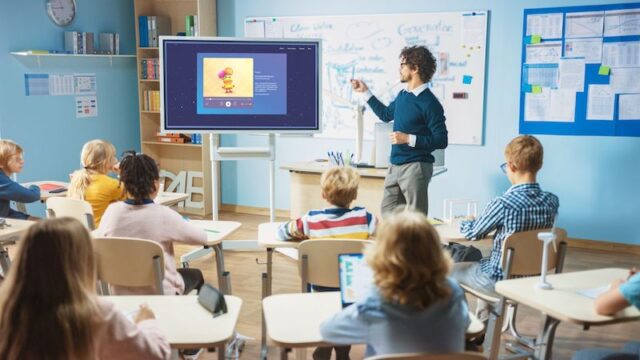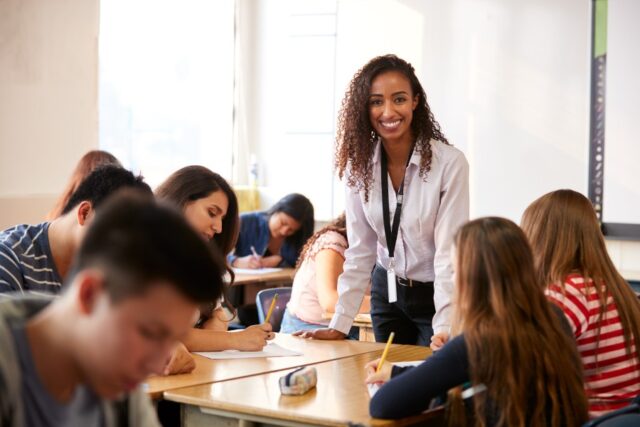
Quality education imparted by mindful educators helps produce individuals who contribute meaningfully to their communities. Quality education imparts relevant information to students in planned stages, nurturing their higher-order and critical thinking skills and equipping them to lead successful and meaningful lives.
However, while information and technology have advanced at unprecedented rates, classroom instruction has evolved much slower, resulting in significantly lower learning outcomes.
Various factors affect educational learning outcomes, from curriculum design to research-based instructional strategies. This article will explore some tips to help educators improve student learning outcomes.
1. Use an Evidence-Based Curriculum and Adapt It To Students’ Needs

An evidence-based curriculum is a comprehensive and intentional teaching and learning plan outlining the goals, objectives, content, and methods used to educate learners. It includes subject-specific content and skills such as critical thinking, problem-solving, and collaboration. An effective curriculum is dynamic and evolves based on the changing needs of learners and society, shaped by ongoing research, evaluation, and reflection.
It is imperative to adapt the curriculum to meet each student’s unique learning styles and abilities, ensuring all students have access to a high-quality education that meets their individual needs to prepare them for success. When students feel that the curriculum is relevant to their lives and interests, they are more likely to be interested in the content, improving learning outcomes.
2. Use Research-Based Instruction Strategies
Educators must know what teaching strategies to use to ensure positive student learning outcomes. Research-based instruction strategies ensure that teachers incorporate the most effective tools and techniques to help their students succeed. These strategies are developed by education experts using the latest and most reliable evidence-based research about how students learn and which methods have shown improved learning outcomes in students.
However, there is excessive information online, making it difficult for educators to discern which strategies to incorporate into their instruction and how to do it meaningfully. Learning from reliable and accredited courses on research-based teaching strategies is essential for teachers committed to their professional growth and looking to deepen their knowledge and skills in this area. These courses provide access to the latest research and best practices in teaching and learning and offer practical guidance on applying these strategies in the classroom. Online courses are also convenient and flexible, allowing teachers to learn at their own pace and schedule.
Teachers with a sound understanding of instructional strategies which have proved successful can continue improving their classroom effectiveness to help their students succeed.
3. Provide a Positive Learning Environment that Fosters a Growth Mindset

Creating a positive learning environment that fosters a growth mindset is essential to achieving optimal learning outcomes. A safe and inclusive learning environment is one where students can express themselves freely, share their opinions and experiences, and learn from each other’s differences. Teachers can create such an environment by setting clear expectations for respectful behavior, valuing and affirming diversity, and addressing any incidents of bias or discrimination promptly and effectively.
Fostering a growth mindset among students is essential to improving educational learning outcomes. It is the belief that students can develop intelligence and abilities through effort and perseverance. Teachers should praise students’ actions instead of results. Students should receive regular positive feedback and ample opportunities to practice and improve. Students with a growth mindset are more willing to take on challenges, persist in the face of obstacles, and embrace feedback as an opportunity to learn and improve. Creating a positive learning environment makes students more likely to be engaged and motivated to learn and improve.
4. Create Active Learning Opportunities that are Student-Centered
Active learning involves engaging students in the learning process actively. Instead of passively listening to lectures or reading textbooks, students are encouraged to participate in discussions, solve problems, conduct experiments, or work on projects. Active learning is more effective because it promotes more profound understanding, critical thinking, and knowledge retention. It also enhances students’ motivation and confidence, as they feel more involved and invested in the process.
Student-centered learning is an approach that places students at the center of the learning process. Students are involved in their learning and are encouraged to take ownership of their education. Some ways to incorporate student-centered learning include inquiry-based, project-based, and personalized learning. Teachers can use various methods such as group work, case studies, simulations, debates, or role-playing. They can also use educational games, quizzes, or online platforms that allow students to interact with each other and the learning materials.
5. Use Differentiated Instruction

Differentiated instruction recognizes the diversity of learners in the classroom and seeks to tailor instruction to meet their individual needs and interests. This approach helps to address students’ learning challenges and provides them with the support they need to succeed.
Teachers can use various teaching methods and materials that accommodate different learning styles. For example, some students may be visual learners and benefit from visual aids, while others may be kinesthetic learners and benefit from hands-on activities. Teachers can allow students to choose different assessment methods, including oral presentations, group projects, or written assignments.
Differentiated instruction promotes equity and inclusivity in the classroom. By fostering an inclusive and responsive environment for diverse learners’ needs, teachers can help reduce the achievement gap and provide all students with opportunities to learn and succeed.
6. Provide Timely and Constructive Feedback
Feedback is paramount to enhancing the learning process. Providing timely and constructive feedback helps students understand their strengths and weaknesses to adjust their learning strategies.
Feedback should be specific, actionable, and goal-oriented. It should be delivered respectfully and constructively. Teachers should encourage self-assessment and reflection among students. Formative assessments are a critical tool in providing ongoing and constructive feedback. Formative assessment is the process of gathering and using feedback during the learning process to inform instruction and support students’ learning.
There are various formative assessment tools, such as quizzes, polls, peer reviews, or self-reflection. The purpose of formative assessment is to provide students with timely and constructive feedback on their progress and to help teachers adjust their instruction to meet students’ needs.
Conclusion
All students must have access to a high-quality education that meets their individual needs, regardless of their background, culture, or ability. Educators play a vital role in shaping the future of our society. Improving educational learning outcomes prepares students for future challenges. Although the achievement gap is wide, it is possible to overcome it. By incorporating research-based strategies and creating an environment conducive to learning, teachers can help students reach their full potential to succeed academically and beyond.












